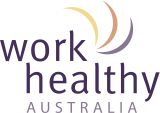
Male worker speaking with EAP on the phone
The uptake of Employee Assistance Programs (EAPs) has increased in the past few years, with an estimated 80% of top 500 companies in Australia and many small to medium-sized organisations offering this service to their employees. Yet many organisations question their efficacy, utilisation and return on investment.
Here we review the limitations and benefits of offering an EAP. Importantly, we look at ways to ensure you are getting the most out of them – as one part of your workplace strategy to reduce and manage workplace psychosocial risks.
Understanding EAPs – the beginning
EAPs originated in the United States in the 1940s. Initially, they began as programs designed to manage alcoholism among employees. Over time, EAPs expanded to include a broader range of issues affecting employee performance, such as mental health, family problems, workplace issues, and substance abuse, evolving into the more comprehensive programs that are common today.
The COVID-19 pandemic saw an increased demand for EAP services. Organisations quickly adapted their counselling to online services to support remote workers. Recent legislation focusing on workplace psychosocial hazards has also contributed to the uptake of EAP by organisations.
The competition amongst EAP providers is rising, with many players contesting for market share.
Nowadays, counselling for employees is only one of the many services provided through an EAP. Depending on the provider and the level of service offered, they can include:
- Counselling for any issue
- Wellbeing support, such as nutritional
- Legal referral and financial coaching
- Specialist lines for LGBTIQ+, First Nations, Domestic Violence
- Critical incident response
- Support for leaders and managers
- Leadership coaching
- Exit interviews
- Outplacement support
- Mediation
- Workshop training
- Employee surveys
EAP challenges
Despite the widespread presence of EAPs in workplaces, there have been challenges in monitoring their effectiveness. Some of the difficulties associated with EAPs have been identified as:
EAPs are reactive
EAPs are designed to assist issues that have already occurred or are occurring. Organisations implementing best practice strategies will have early intervention practices and wellbeing initiatives to reduce psychosocial risks, with an EAP offered as a supplementary service. EAPs should not be considered the only solution for addressing mental health in the workplace.
Quality control and monitoring
The quality of EAP services in Australia has been inconsistent, with lack of industry regulation and benchmarking. This has resulted in a wide range of counselling staff experience levels and quality of services. According to Comcare, “the complexity of available EAP service offerings can lead to uncertainty in identifying which services best meet organisational and workforce needs.”
Low utilisation
There is generally a low uptake of EAP services, with an average utilisation of 5%. There is also considerable variation across industries and organisations, with some sectors reporting higher utilisation than others. Factors such as lack of knowledge about their services, stigma associated with the use of mental health support, lack of trustworthiness and confidentiality, and potential for negative impact on career paths have been identified as barriers to use.
Underrepresented groups
EAPs have been underutilised by males, who are lower users of mental health services in general. With the complexity and diversity of providers in the market, it can be difficult for employers to select the best EAP provider for their workforce and particular needs. Research has explored how males in blue-collar roles had different motivators for accessing EAP than those from white-collar jobs, and suggested more diversity and customising in EAP’s marketing.
Limited services
Complimentary counselling via an EAP is usually limited to a certain number of sessions per employee, and after that, pricing can increase dramatically.
The greatest challenge is the lack of understanding of the role of EAP’s within an organisation and underutilising these services.
NSW State Insurance Regulatory Authority _ Employee Assistance Program literature review
How can you get the most out of your EAP?
Whether you already have an EAP provider or are considering procuring one, benchmarking will improve your EAP effectiveness and enhance employee uptake.
Comcare has developed six principles to guide organisations in procuring and using EAP services. They suggest:
- Implementing a structured approach to EAP design based on your organisation, the needs of workers and their families, and the challenges within your workplace.
- Offering an inclusive and accessible service delivery model that facilitates easy access for workers and their families
- Defining standards for competent and qualified EAP personnel to ensure they have relevant tertiary qualifications and relevant experience to support a diverse range of workers
- Continuous awareness-raising of EAP services, for example, through educational events, supervisor training, word of mouth, and other visibility initiatives
- Identifying key metrics to support EAP quality and performance, such as response times, monthly and quarterly reporting, utilisation rates and other metrics that can help identify trends, issues and opportunities.
- Adopting clear and valid methods to understand the direct effect of EAP services on worker and organisational performance.
EAP services were just ‘one piece of the puzzle’ of supporting mentally healthy workplaces
NSW State Insurance Regulatory Authority _ EAP Industry Stakeholder Report
Conclusion
EAPs provide a way for organisations to support their workers and families, however, they are just one avenue for help. They must be part of a comprehensive onsite health program designed to suit your organisation and workers; not simply a tick-box exercise. EAPs do not replace early intervention for mental health.
More psychosocial articles:
Sign up to our monthly enewsletter
"*" indicates required fields



